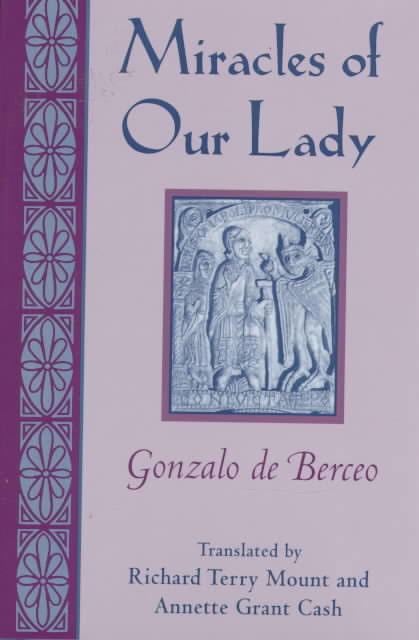 | ||
Similar The Book of Good Love, Libro de Alexandre, Tales of Count Lucanor, Cantar de Mio Cid, Libro de Apolonio | ||
The Miracles of Our Lady, Milagros de Nuestra Señora, is the main work of Gonzalo de Berceo.
Contents
The book is a collection of exempla about twenty-five miracles of the Blessed Virgin Mary, written around 1260 in a sort of Spanish dialect called Riojan.
Context and influence
The sources used by Gonzalo de Berceo were various collections of tales about the miracles written in Latin He made use of the characteristic resources of the minstrels (see Mester de Juglaría). It is important to note that Gonzalo de Berceo belonged to the Mester de Clerecía. The book helped to promote Marian devotions among the people by making the subject easier to understand for the people of his time, but it contains many heretical elements that give Mary powers of resurrection or the ability to save sinners from Divine Judgement. This led to the condemnation of the text by the Roman Catholic Church as heresy.
Structure
The work's introduction, which features the author himself, is allegorical. It is set in an idealized natural scene, which symbolizes the virtues and perfections of the Virgin. The introduction is followed by twenty-five miracles performed by the Virgin for her devotees. At the end of each story there is a moraleja (moral) or teaching to make the advantages of devotion to Mary apparent to the listener or reader. These miracles can be categorised into three different types:
